If there is a place in the world that seems to come straight out of a dream, that is Machu Picchu. Its ancient Inca ruins, nestled high in the Peruvian Andes, exude a magic that transcends time and history. However, as with any great adventure, choosing the best time to visit Machu Picchu can make an extraordinary difference in your experience.
Are you curious about what the weather in Machu Picchu is really like? What is the best time of year to visit? Or which month will make your trip truly unforgettable? While any day might seem perfect to experience the majesty of this Inca citadel, each season of the year offers its own unique charm.In this blog, we’ll explore how each month paints a different picture of this historic and natural treasure. Join us as we uncover the mystery of what might be the perfect time for your visit to Machu Picchu.
- How to Choose the Best Time to Visit Machu Picchu
- Rainy Season in Machu Picchu, Peru
- Dry Season in Machu Picchu, Peru
- Rainy Season vs Dry Season in Machu Picchu
- What is the best time to visit Machu Picchu?
- Cusco and Machu Picchu In January
- Cusco and Machu Picchu in February
- Cusco and Machu Picchu in March
- Cusco and Machu Picchu in May
- Cusco and Machu Picchu in June
- Cusco and Machu Picchu in July
- Cusco and Machu Picchu in August
- Cusco and Machu Picchu in September
- Cusco and Machu Picchu in October
- Machu Picchu in November
- Cusco and Machu Picchu in December
- The best time for hiking in Machu Picchu
- Treks and tours to Machu Picchu
- Frequently Asked Questions about Machu Picchu
- Travel to Machu Picchu: Listen to Your Heart
How to Choose the Best Time to Visit Machu Picchu
When planning your visit to Machu Picchu, it’s essential to consider several factors that will shape your experience, from weather conditions to the number of visitors and your personal preferences. Here are some tips to help you choose the ideal time for you to travel and witness this wonder of the world:
- Weather Conditions: The weather plays a crucial role in planning your visit to Machu Picchu. The dry season, from May to September, offers sunny days and pleasant temperatures, making for a more comfortable experience. On the other hand, frequent rains and high humidity can make your visit more challenging from October to April, though they also add a mystical charm to the site.
- Visitor Crowds: Machu Picchu sees heavy crowds due to its immense popularity. The site can become quite crowded during the high season (June, July, and August). If you prefer a quieter experience, consider visiting during the shoulder months—April, May, September, or October—when crowds are smaller, but the weather is still favorable.
- Ticket Reservations: Entry to Machu Picchu is limited, and tickets can sell out quickly, especially during high-demand periods. Planning ahead and securing your tickets early is essential if you intend to visit during the high season.
- Unpredictable Weather: Andean weather is unpredictable, meaning unexpected rain can occur even during the dry season. Be prepared with waterproof clothing and flexible plans to adapt to sudden changes in weather conditions.
The best time to visit Machu Picchu truly depends on your personal preferences:
- For dry weather and fewer tourists: April, May, September, or October.
- For lush greenery and vibrant landscapes: December and January.
- For fewer crowds and milder rains: March or November.
Ultimately, the best time to visit Machu Picchu depends on what matters most to you: weather, tranquility, or the vibrant natural surroundings. Plan ahead, stay prepared, and enjoy the magic of this incredible destination!
Here’s an overview of what to expect in Cusco during each season, helping you make the best choice for your visit.

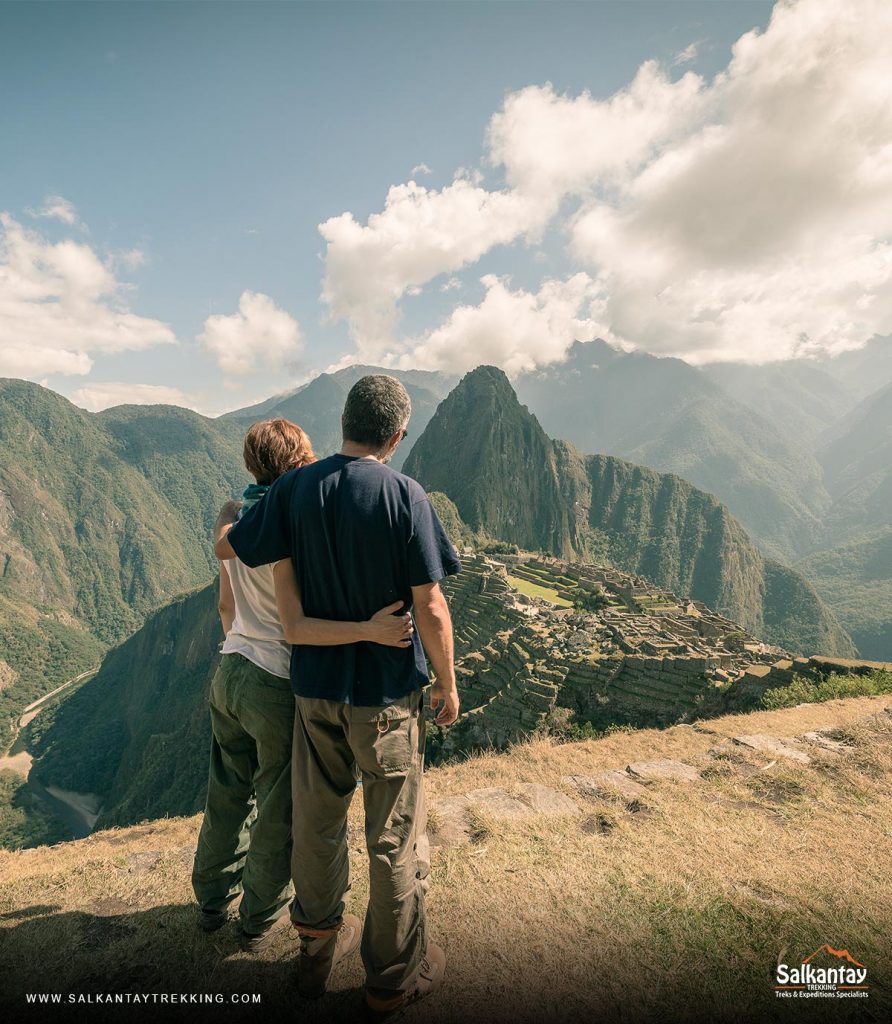
Rainy Season in Machu Picchu, Peru
The rainy season begins between October and November and lasts until March or April. During this period, rainfall is more frequent, but the image of a constantly gray landscape is a misconception. In reality, rain occurs mainly in the afternoons, leaving clear mornings to enjoy the breathtaking views of Machu Picchu.
January and February may experience more persistent rainfall, but this also gives the surroundings a special charm, as you’ll see Machu Picchu with more vibrant colors. Flowers bloom, and the landscape becomes lush and green.
This season is also known as “the low tourist season.” With fewer visitors, the experience is quieter and more relaxed. Additionally, during this time of year, you’ll find lower prices for hotels, tours, and services, making it an affordable option for travelers.
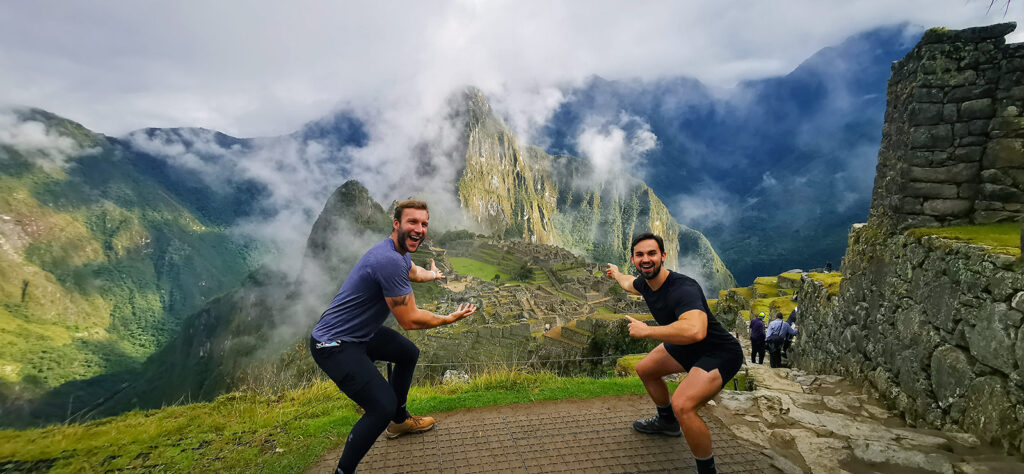
Dry Season in Machu Picchu, Peru
The dry season in Machu Picchu, Peru, spans from April to October. During this period, Cusco experiences more stable weather and generally clear skies. This time of the year is considered one of the best for visiting Machu Picchu, as the weather conditions are more favorable.
The dry season coincides with the high tourist season. This means there may be more visitors compared to the rainy season. However, despite the influx of tourists, the beauty of Machu Picchu and its surroundings remains stunning and captivating.
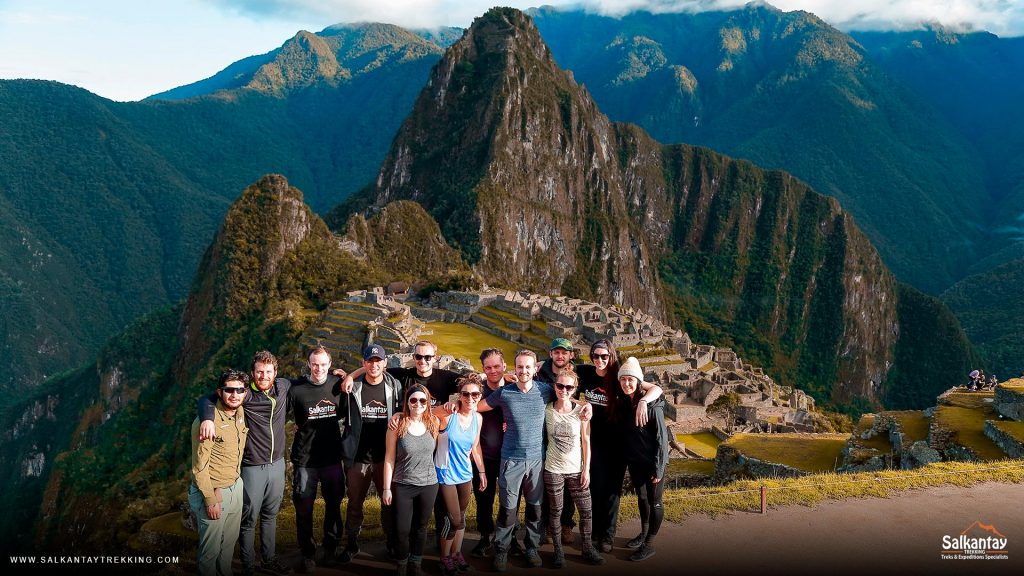
Rainy Season vs Dry Season in Machu Picchu
| Rainy Season | Dry Season | |
| Climate | – Foggy mornings – Rain in the afternoons – Daytime temperatures: 12°C-18°C (53.6°F-64.4°F) – Nighttime temperatures: around 10°C (50°F) | – Clear skies – Low chance of rain – Daytime temperatures: 18°C-22°C (64°F-72°F) – Nighttime temperatures: around 6°C (42.8°F) |
| Nature | – Green and wet landscapes due to the rains – Ruins surrounded by lush vegetation | – Clear views that allow you to appreciate architectural details – Ruins contrasting with the blue sky |
| Crowds | – Fewer tourists compared to the dry season. – Opportunity to enjoy Machu Picchu with more tranquility. | – A higher influx of tourists, especially from June to August. |
| Price | – Lower prices for hotels, tours, and services due to the low tourist season | – Hotel and tour rates may be higher due to the high tourist season. |
| Experience | – A calm and tranquil experience with a magical atmosphere | – More predictable and sunny weather conditions. Ideal for exploring without interruptions. |
| Recommendation | – Perfect for those seeking an intimate and affordable experience. – Bringing appropriate rain gear is essential. | – Ideal for travelers who prefer more stable weather. – Bringing sunscreen and light, warm clothing is recommended. |
Undoubtedly, both the rainy and dry seasons in Machu Picchu have their own charms. The rainy season offers a serene and authentic experience, while the dry season presents a completely different spectacle. The clear skies allow the sun to illuminate every corner of this archaeological wonder.
Carefully compare your options to choose the best time that suits your preferences for visiting this Inca treasure.
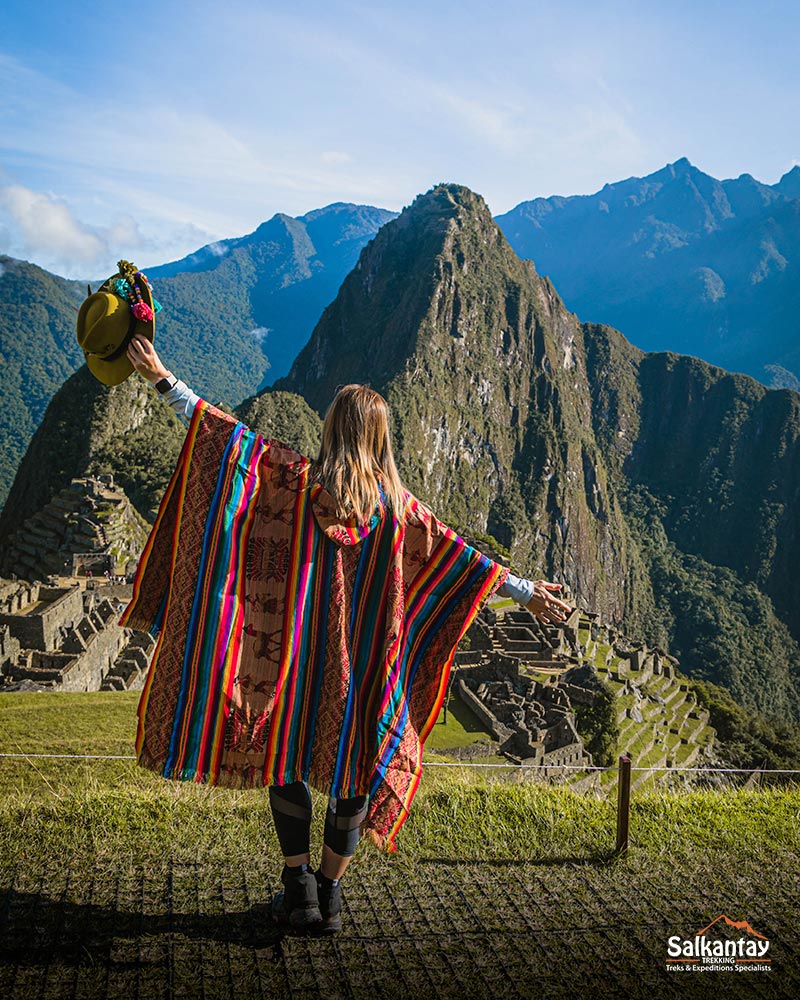
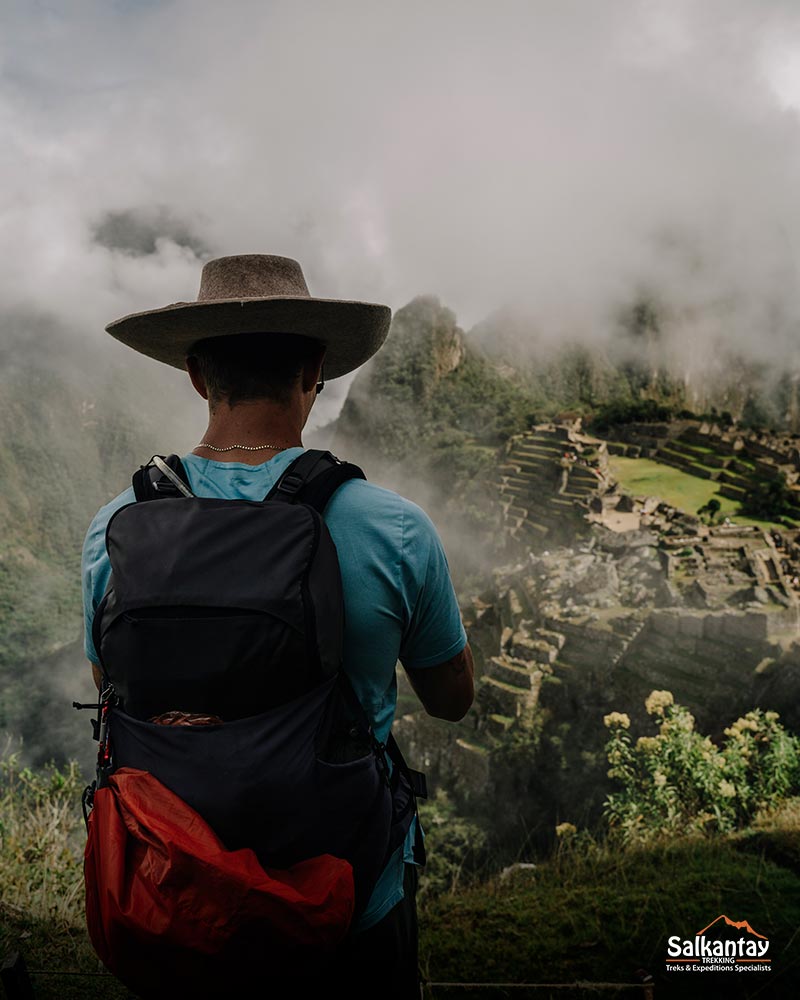
What is the best time to visit Machu Picchu?
Machu Picchu is located in a transitional zone between the Andes and the Amazon jungle of Peru. For this reason, it has many microclimates and weather conditions can vary throughout the day. Throughout the year, Machu Picchu enjoys a warm climate, though it is also humid and rainy.
As a place of great historical and cultural significance, Machu Picchu attracts visitors year-round, whether during the rainy season or the dry season. Every day, thousands of local and international tourists marvel at this incredible archaeological site.
You might also be interested in learning about the weather in Cusco, the closest city to the great Inca citadel. Most tourists stay in Cusco to explore other attractions beyond Machu Picchu, so you should also be prepared for the city’s changing weather conditions.To help you make an informed decision, here is a breakdown of the weather in Machu Picchu month by month:
Cusco and Machu Picchu In January
- Weather in Machu Picchu: Machu Picchu in January is in the midst of the rainy season. While the landscape becomes lush and green, the weather can be unpredictable, with intermittent rain and cloudy days. Despite potential visibility restrictions, the fantastic natural surroundings make January an appealing option for vegetation lovers.
Daytime temperatures at the Machu Picchu citadel can range from 20°C (68°F) to 25°C (77°F), while nighttime temperatures may drop to around 10°C (50°F). Therefore, we recommend bringing light clothing, but also being prepared with extra layers and rain gear. - Weather in Cusco: In Cusco, rainfall is frequent, though there are usually moments during the day when the sun comes out. Temperatures range between 5.8°C (42.4°F) at night and 18.5°C (65.3°F) during the day, making the climate fairly mild.
Cusco and Machu Picchu in February
- Weather in Machu Picchu: February remains one of the rainiest months of the year. However, with some luck, you might find sunny days at Machu Picchu. It is undoubtedly a good time to visit this sacred site in a quieter, less touristy atmosphere.
The temperatures at Machu Picchu in February range from highs of approximately 22°C (71.6°F) to lows of around 8°C (46.4°F). We recommend bringing a raincoat or rain-resistant clothing in case of occasional rainfall. - Weather in Cusco: Cusco in February is quite rainy. Precipitation can occur daily and can be pretty heavy. Even so, temperatures remain between 5.9°C and 18°C (42.6°F and 64.4°F).
IMPORTANT NOTE: Due to frequent rains and slippery trails during this month, the Inca Trail to Machu Picchu is closed for maintenance work to ensure the safety of hikers.
Cusco and Machu Picchu in March
- Weather in Machu Picchu: Machu Picchu in March is wonderful, as the rains significantly decrease and the sun appears more often. The vegetation remains abundant, and the landscape becomes sunnier, clearer, and more colorful. Temperatures in Machu Picchu in March range from 21°C (69.8°F) during the day to around 8°C (46.4°F) at night. It is the best time to visit Machu Picchu if you want to avoid crowds and enjoy more stable weather.
- Weather in Cusco: In March, Cusco begins to get sunnier. It’s a good time to go on hikes and enjoy the lush, beautiful landscapes. Temperatures range between 5.7°C and 18.4°C (42.3°F and 65.1°F).
Machu Picchu in April
- Weather in Machu Picchu: April definitely marks the end of the rainy season. With sunnier days and vibrant wildlife, nature is at its peak. The weather in Machu Picchu in April ranges from 22°C (71.6°F) during the day to 8°C (46.4°F) at night. It is one of the best times of the year to visit Machu Picchu, as the weather is pleasant and there are fewer tourists compared to the following months.
- Weather in Cusco: April is a beautiful month to visit Cusco. Although there may still be some rain, the sun is much more present. Nighttime temperatures drop to 4.2°C (39.6°F), while daytime temperatures can reach 18.9°C (66.0°F).
Cusco and Machu Picchu in May
- Weather in Machu Picchu: May signifies the beginning of the high season at Machu Picchu. The weather remains pleasant, but the number of tourists gradually increases. Temperatures in Machu Picchu in May reach around 30°C (86°F) during the day and 6°C (42.8°F) at night, with a stronger contrast between cold and heat throughout the day. If you prefer a quieter atmosphere, visiting at the start of the month is recommended.
- Weather in Cusco: May marks the beginning of the dry season in Cusco. There will be no more rain, but temperatures will be much more varied, with quite cold nights. At night, temperatures can drop to 2°C (35.6°F), but during the day, highs can reach around 18.7°C (65.7°F). Take advantage before the tourist crowds arrive!
Cusco and Machu Picchu in June
- Weather in Machu Picchu: This month brings an exciting atmosphere filled with celebrations related to Inca traditions. As for the weather, it is excellent—no rain, but a bit cooler. The maximum temperature in Machu Picchu in June will reach around 28°C (82.4°F), with a minimum of around 6°C (42.8°F). The sun is intense during the day, and rain is rare, allowing for an enjoyable visit to the site.
- Weather in Cusco: June is the driest month of the year, with very little rainfall. It’s possible that you won’t see a single cloud. Temperatures begin to polarize, with very cold nights dropping to 0.2°C (32.4°F) and daytime highs reaching 18.5°C (65.3°F).
DON’T MISS IT! This month coincides with the anniversary of Cusco, meaning there are plenty of festivals, such as the famous Inti Raymi. Therefore, we recommend making reservations in advance, as tourist crowds flock to enjoy the parades and celebrations.
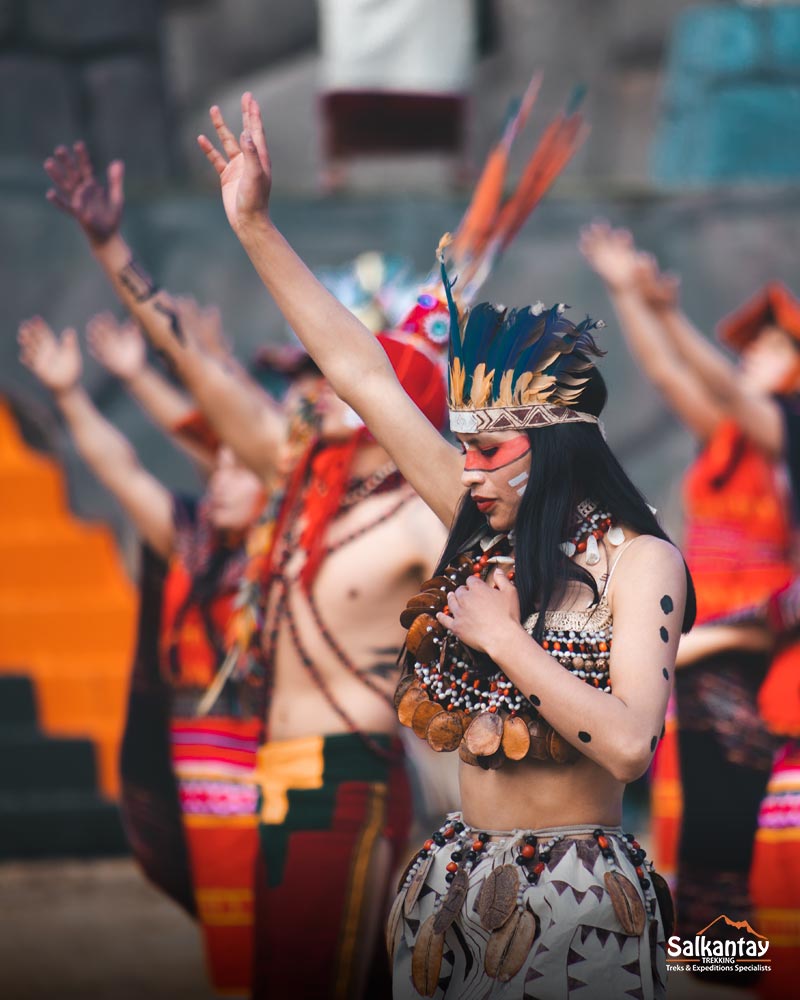
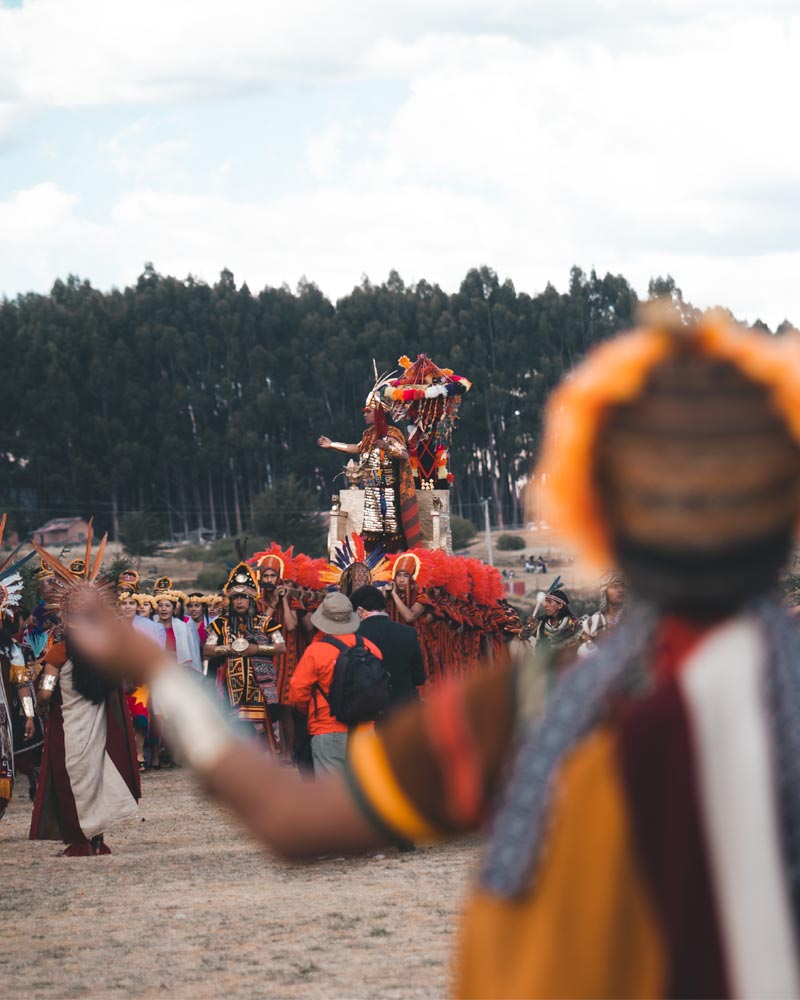
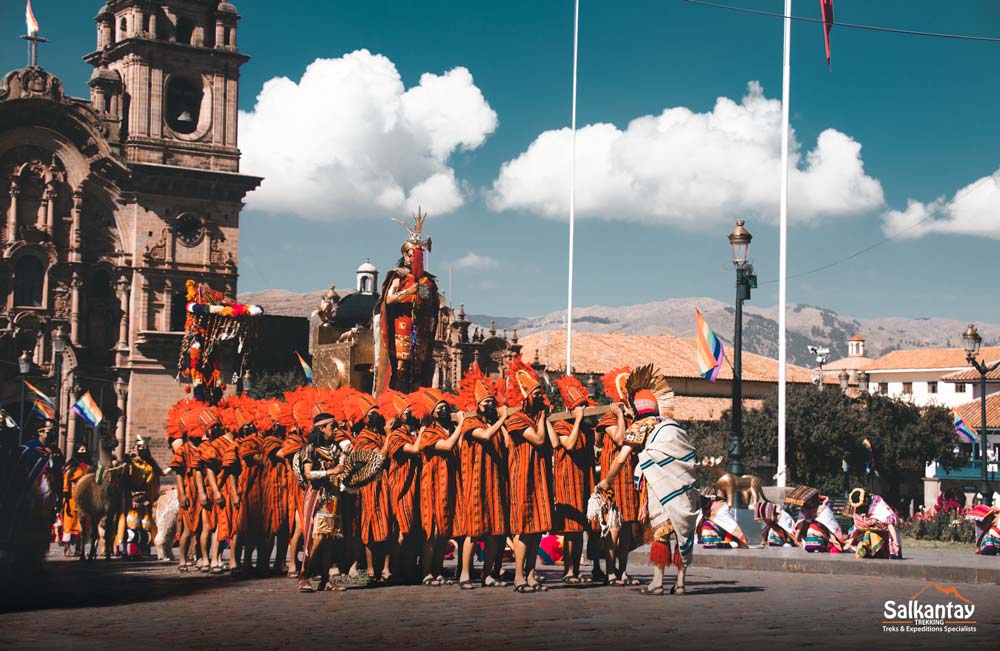
Cusco and Machu Picchu in July
- Weather in Machu Picchu: Machu Picchu in July is at the peak of the high season. This month attracts tourists from all over the world to explore the Inca citadel while taking in the mystical mountains and valleys surrounding it. The weather ranges from 27°C (80.6°F) during the day to 7°C (44.6°F) at night.
We recommend booking your tickets to Machu Picchu in advance, as demand is high in July. We also suggest arriving early to the citadel to enjoy a more peaceful atmosphere. - Weather in Cusco: July is the coldest month in Cusco, with minimum temperatures of 0.3°C (32.5°F) and maximums of 18.1°C (64.6°F). Although it is a dry month, mornings often experience “frosts,” caused by humidity turning into ice on the vegetation.
Cusco and Machu Picchu in August
- Weather in Machu Picchu: With maximum temperatures of 26°C (78.8°F) and minimums of 6°C (42.8°F), you’ll be able to enjoy the spectacular landscapes without worrying about rain.
However, keep in mind that the site will be more crowded, so it’s important to plan and book your Machu Picchu tickets in advance. This period is an incredible opportunity to take part in the various hikes and tours to Machu Picchu, making the most of Peru’s natural surroundings and history. - Weather in Cusco: August brings fairly warm temperatures during the day, though it remains cold at night. The maximum temperatures reach 19.3°C (66.7°F), while the minimums drop to 0.6°C (33.1°F). Although the landscape will be somewhat drier, the sun will bring out the incredible colors of the surroundings.
Cusco and Machu Picchu in September
- Weather in Machu Picchu: September is another great time to visit Machu Picchu. The weather remains pleasant (maximum temperature 22°C – 71.6°F and minimum temperature 7°C – 44.6°F), but the number of tourists begins to decrease gradually. This means you’ll have more space to explore the site and enjoy its panoramic views without the crowds.
- Weather in Cusco: September is one of the warmest months of the year. Nighttime temperatures rise to around 3.4°C (38.1°F), and daytime temperatures remain around 19.2°C (66.6°F). It’s an ideal time to explore the surroundings of Cusco without rain, enjoying sunny and mild weather.
Cusco and Machu Picchu in October
- Weather in Machu Picchu: In October, the first rains begin in Machu Picchu, although temperatures remain pleasant, with maximums of 22°C (71.6°F) and minimums of 5°C (41°F). It’s a perfect month to explore the Inca citadel and its surroundings, as the number of tourists is still lower than in September, and the vegetation starts to become much richer and more colorful.
- Weather in Cusco: This is the warmest month of the year. October has great weather, with sporadic showers and generally blue skies. Temperatures are between 4.7 °C (40.5°F) and 20.3 °C (68.5°F)
Machu Picchu in November
- Weather in Machu Picchu: Although November is a transition period towards the rainy season, the rainfall in Machu Picchu is less intense than in the following months. Temperatures range from 22°C (71.6°F) to 6°C (42.8°F), making it a great time to enjoy the landscape at its fullest. You’ll be able to observe different types of plants and flowers, especially orchids and banana plants.
- Weather in Cusco: In November, the first rains will begin in Cusco. It continues to have a pleasant climate, with a minimum temperature of 5.2 °C (41.4°F) at night and a maximum of 20 °C (68°F) during the day. It is advisable to travel at the beginning of the month to avoid heavier rains.
Cusco and Machu Picchu in December
- Weather in Machu Picchu: December is the month when summer begins in Peru, but it is also when the frequent rains start. The rainy season in Machu Picchu brings maximum temperatures of 21°C (69.8°F) and minimums of 6°C (42.8°F), which means that rainfall can be more frequent during this time.
Despite the rain, Machu Picchu in December has its own charm, as the mountains and valleys will be full of life. Additionally, if you choose to celebrate Christmas or New Year’s in Machu Picchu, you can start the year in a different and unique way, surrounded by nature. - Weather in Cusco: Rainfall in December is more frequent, although it is still a warm month. Temperatures vary between 5°C (41°F) and 18.8°C (65.8°F). The landscape will already be greener, so you can have a great travel experience if you use rain protection.
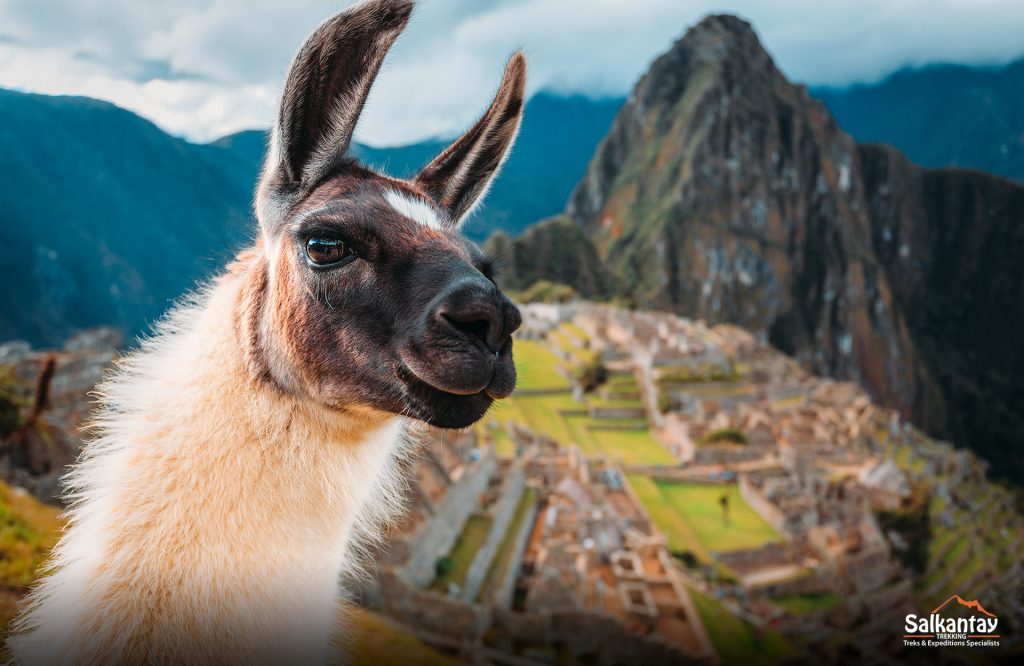
The best time for hiking in Machu Picchu
The best time for hiking in Machu Picchu is during the dry season, from April to October. The weather tends to be more stable through these months, with less rain and more moderate temperatures. This provides an optimal hiking experience during your visit to Machu Picchu.
The rainy season in Cusco runs from November to March. Although hiking is still possible during this period, conditions can be more challenging due to frequent storms. Trails may become slippery, and the landscape may be covered by clouds and mist, which could affect the visibility of the stunning views in the area. Additionally, some routes may be closed for safety reasons, such as the Inca Trail.
Don’t worry! Even if you travel during the rainy season, you will have an unforgettable trip. Not everyone gets the chance to visit one of the wonders of the world and one of the most important historical monuments on the planet. Enjoy and let yourself be carried away by the experience.
Treks and tours to Machu Picchu
The best way to visit Machu Picchu depends on your preferences and the level of adventure you want on your trip to Peru. An exciting experience is to take one of the hiking routes that end at Machu Picchu.
Here is information about some of the treks to Machu Picchu:
- Classic Inca Trail: It is the most famous and coveted trekking route to Machu Picchu. The Classic Inca Trail takes about 4 days to complete and offers a full experience that combines trekking, nature, and history. You will cross stunning landscapes, Inca ruins, and various microclimates. A highlight is reaching the Sun Gate or Inti Punku, where you will get your first view of Machu Picchu at sunrise.
EXPERT TIP: Plan your trip carefully! If you wish to complete the Inca Trail, remember that this route closes in February, so you will have to choose other travel dates in order to have free access. June and July may be the ideal months.
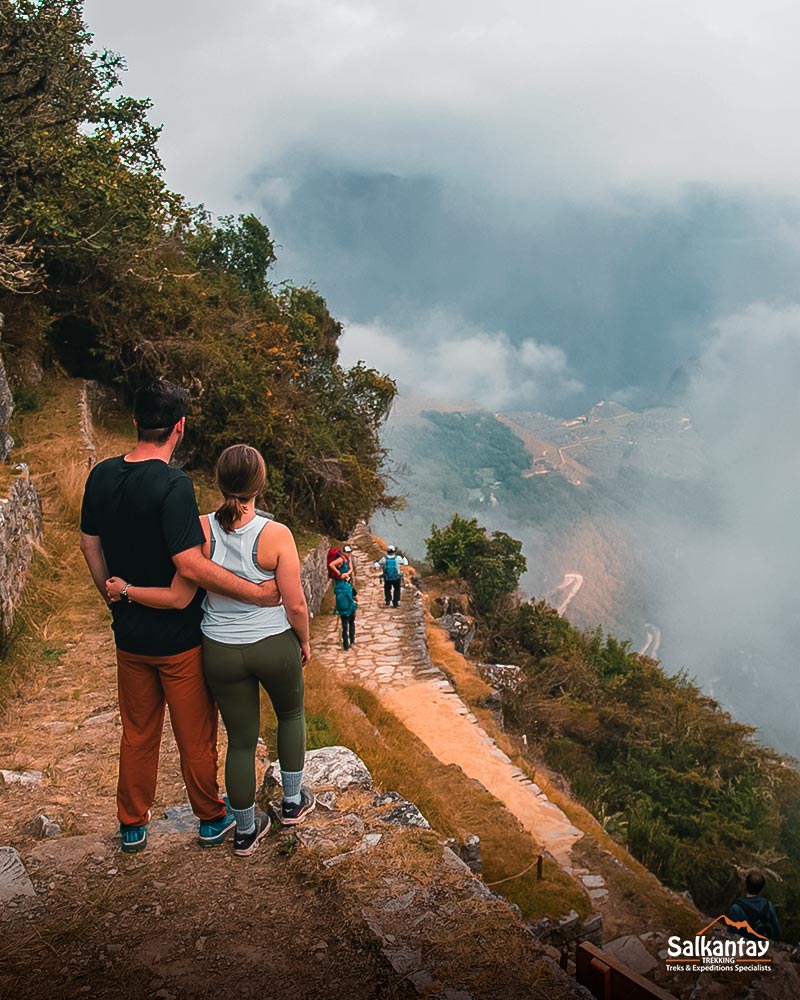
- Salkantay Trek: This is a wilder alternative to the Inca Trail. The Salkantay route is usually completed in 5 days and takes you through various landscapes, from snow-capped mountains to the tropical jungle. The Salkantay Trek is less crowded than the Inca Trail and does not require such restricted permits. Additionally, it takes you to points of interest, such as the Humantay Lagoon and the Salkantay Pass.
EXPERT TIP: To enjoy vivid colors and plentiful vegetation contrasting with the snow-capped mountains, do the Salkantay trek in April and May. The rains will no longer be constant, but the landscape will be completely verdant.
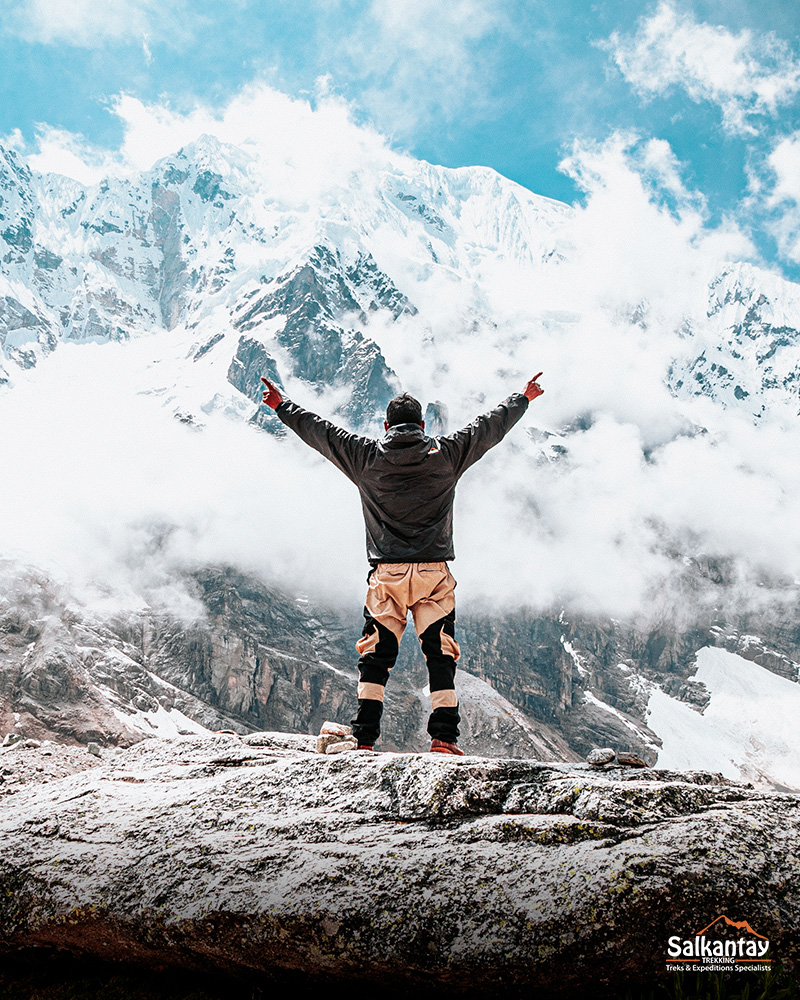
- Choquequirao Trek: If you’re looking for a more challenging and less crowded adventure, the Choquequirao and Machu Picchu route might be the option for you. Choquequirao is an impressive archaeological site, often referred to as “the sister of Machu Picchu” due to the similarities in its architecture. The trek lasts 4, 5, or even 7 days, and takes you through varied landscapes filled with vegetation and native plants unique to the area.
EXPERT TIP: Do this trek in the dry season, in August or September, as you will have to sleep in tents and it can be a bit more uncomfortable. If you like a challenge, any time of the year will be fine!
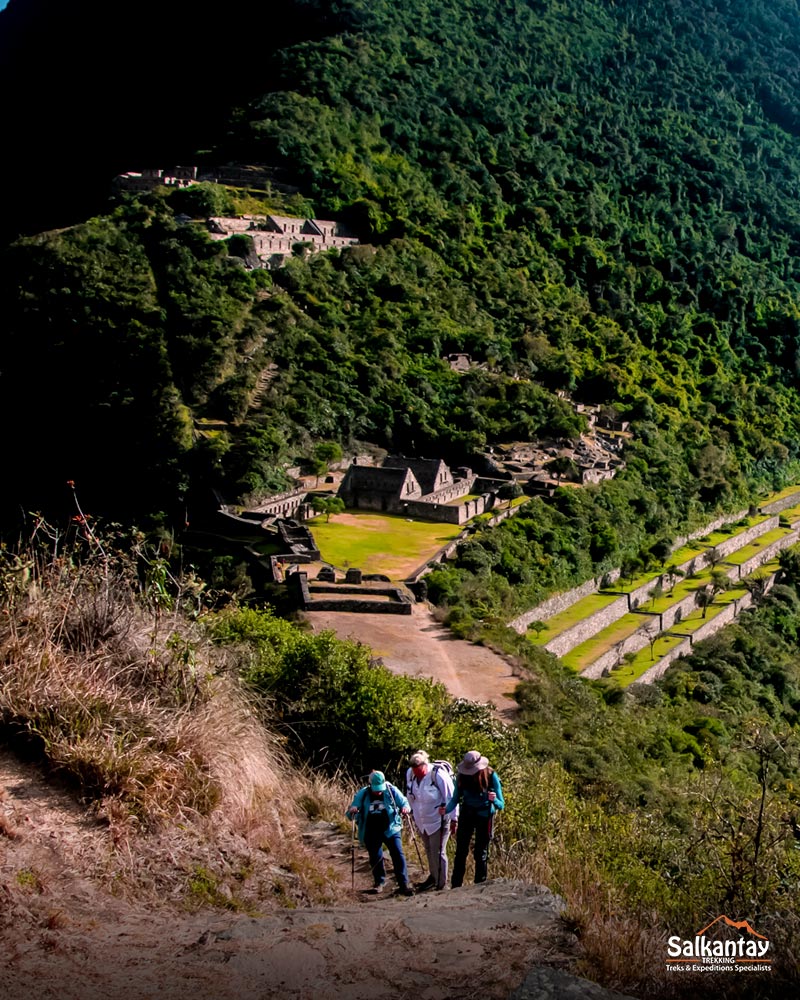
- Lares Trek: This route is a wonderful option for those who want to combine hiking with immersion in local culture. The Lares Trek usually takes around 3 to 4 days, during which you’ll pass through picturesque Andean villages, interact with local community members, and have the opportunity to immerse yourself in their traditional way of life. You’ll also enjoy stunning mountain landscapes and relaxing in natural hot springs.
EXPERT TIP: October and November may be the ideal months for this route. During the day it will be hot and you can soak in a river, while at night you can soothe the cold by bathing in the hot springs of Lares.
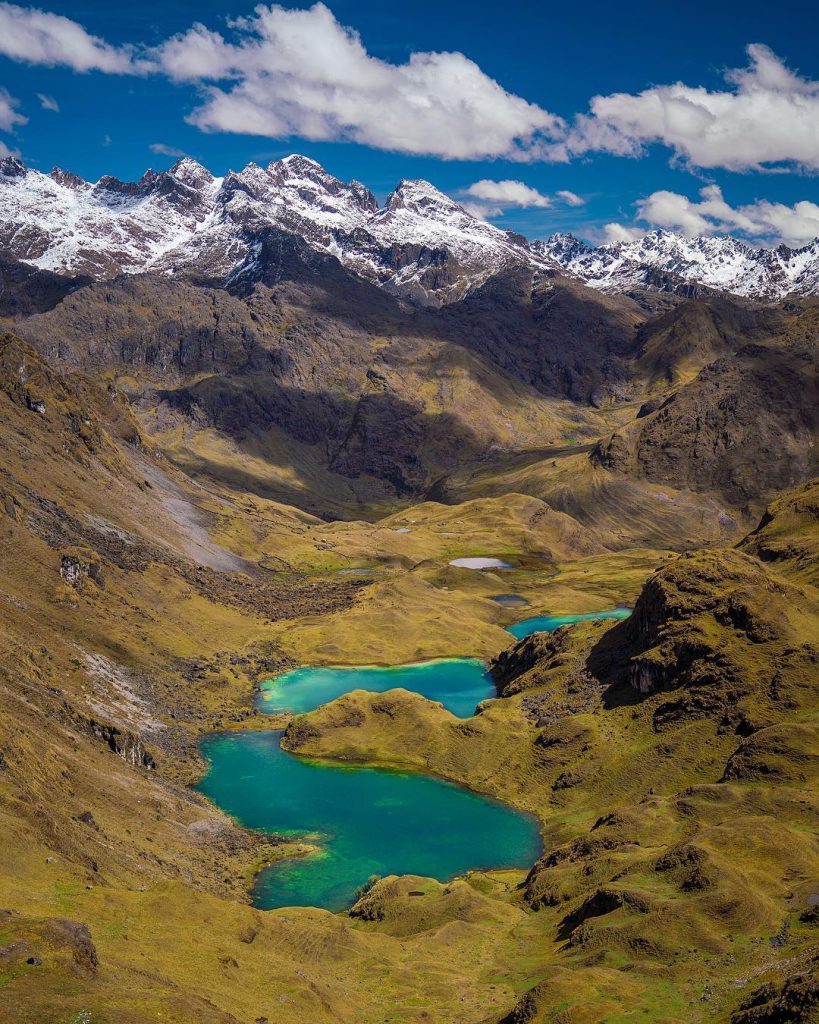
- Ancascocha Trek: This is one of the lesser-known and least crowded routes to reach Machu Picchu. The classic Ancascocha trek takes you through waterfalls, lagoons, and towering mountains, passing by ancient Inca villages before arriving at the breathtaking citadel of Machu Picchu. It’s a challenging adventure where you’ll discover incredible and hidden places.
EXPERT TIP: This route is stunning during the rainy season, as the lagoons and waterfalls will be full of water. Additionally, the landscape will be filled with plants, trees, and flowers. Hiking the Ancascocha trail in December, January, or February can be a great choice.

- Huchuy Qosqo Trek: The magical highlight of this route is the visit to the archaeological complex of Huchuy Qosqo, a well-preserved site perched atop a mountain overlooking the Urubamba Valley. The Huchuy Qosqo trek lasts 3 days and offers an in-depth journey into the history of the Incas, culminating in their most outstanding construction — Machu Picchu.
EXPERT TIP: During January, February and March, the Urubamba valley will be full of life, with plants and flowers growing everywhere. On this trek the rains are not so bothersome, so it is a good time to visit Huchuy Qosqo.
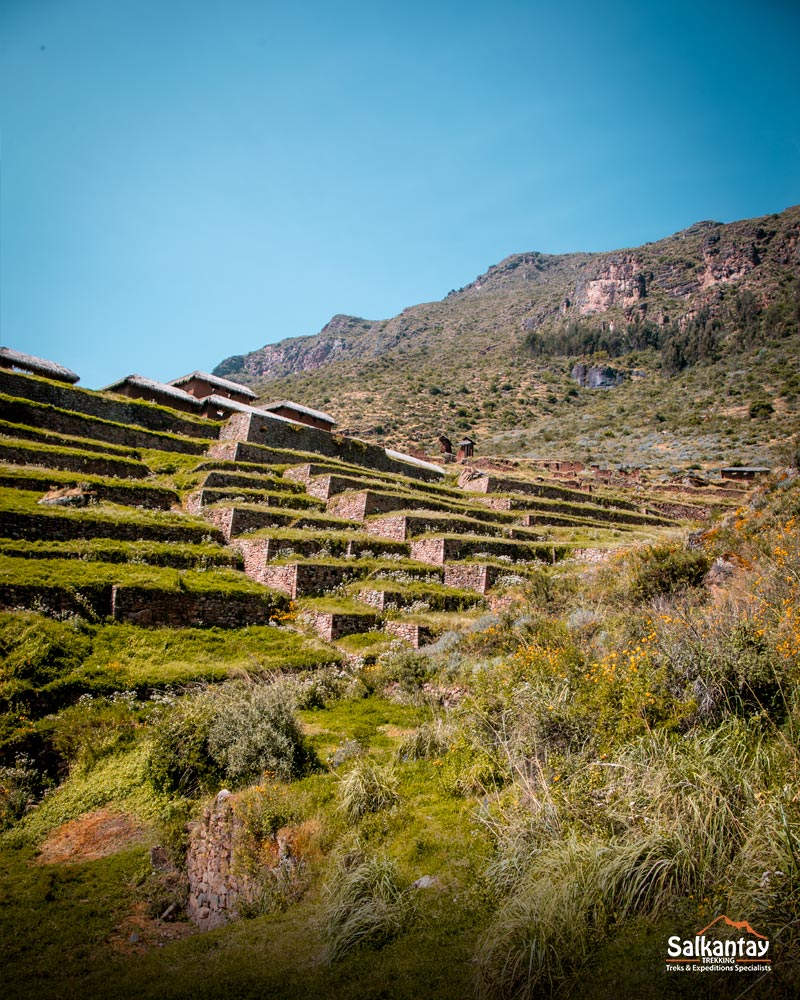
- Cusco Highlights Tour: Exploring the most beautiful and popular attractions of Cusco is possible. On this 7-day route, you’ll experience the Cusco highlights, including the Sacred Valley of the Incas, the Rainbow Mountain, the Humantay Lake, and the majestic Machu Picchu. This detailed journey through the region will fill you with vibrant colors and unforgettable sensations.
EXPERT TIP: This route is ideal to enjoy during the dry season in Cusco. It will allow you to access all the attractions easily, without rain and with sunny skies. Visit the best of Cusco in June, July and August.
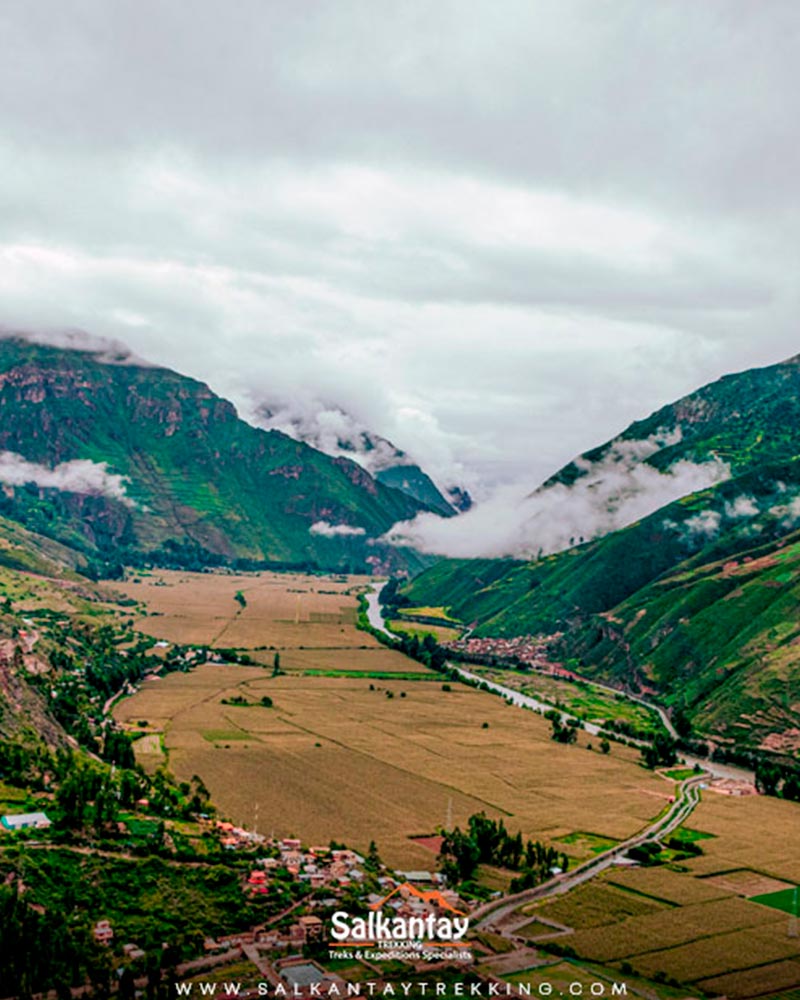
- Inca Jungle: This option offers an adrenaline-filled adventure that will take you to Machu Picchu not only by trekking, but also by biking, rafting, and zip-lining through the cloud forests of the Andes. This will allow you to experience the climate changes from the Andes to the rainforest in a single day. The Inca Jungle Trek is known for combining adventure sports and hiking in Peru, providing an experience that will excite all your senses.
EXPERT TIP: This route is incredible both in the rainy season and in the dry season. Even so, the months in between are the ones that will give you the best weather, as well as fewer tourists. Do the Inca Jungle between March and May or between August and November.
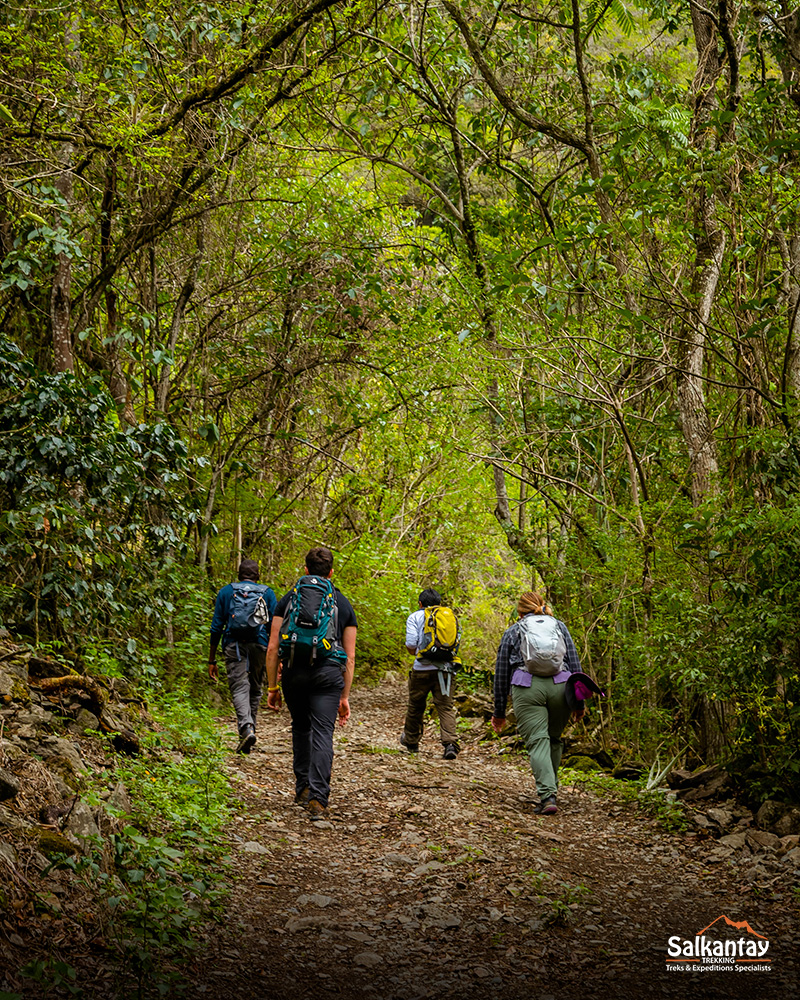
GUIDE’S ADVICE: Before choosing a route, consider your physical fitness level, interests, and available time. Whatever hike you choose, will reward you with unique and enriching experiences that will bring you closer to the majesty of Machu Picchu in a special way.
Frequently Asked Questions about Machu Picchu
What is the best month to visit Machu Picchu?
The best month to visit Machu Picchu is typically one of those during the dry season, which runs from April to October. During this time, you can expect more stable weather and clearer views, making it ideal for hiking and exploring the site.
What is the coldest month in Machu Picchu?
The coldest month in Machu Picchu is usually July. However, it is important to note that the temperatures can still be relatively mild compared to many other cold climates due to its proximity to the Peruvian jungle.
What are the rainy months in Machu Picchu?
The rainy months in Machu Picchu are generally from November to April. During this period, the region experiences more persistent rainfall. This time is also known as the wet season or rainy season.
Is Machu Picchu open on Christmas?
Yes, Machu Picchu is open on Christmas. The site remains open year-round, including on holidays such as Christmas. However, it is important to remember that holidays and weekends can be busier when visiting popular tourist destinations like Machu Picchu.
Is the hike to Machu Picchu difficult?
The difficulty of the hike to Machu Picchu can vary depending on the route you choose and your level of fitness. There are multi-day options, but you can also stay in the village of Aguas Calientes and take a 2-hour hike. This route is not complicated, but it consists of somewhat steep stairs that can cause fatigue.
What is the best month to travel to Peru?
The best month to travel to Peru depends on your preferences and the activities you want to do during your trip. However, the months from May to September are generally considered the best time to visit Peru, especially if you plan to explore Machu Picchu and other areas of the Andes without rain and weather inconveniences.
What is the best time to photograph Machu Picchu?
The best time to photograph Machu Picchu is usually during the dry season, which runs from April to October. During this time, the weather is more stable, and there is less chance of rain, allowing you to capture clear and bright photographs.
What is the most crowded time at Machu Picchu?
The busiest time to visit Machu Picchu is usually during the peak tourist season, which generally spans June and July. During these months, the flow of tourists tends to be higher due to summer holidays in the Northern Hemisphere and school holidays in Peru.
What is the best time of day to visit Machu Picchu?
The best time to visit Machu Picchu is usually in the early morning or late afternoon. These hours offer cooler temperatures and fewer crowds, allowing you to fully appreciate the beauty and tranquility of the site.
Is Machu Picchu cold or hot?
Machu Picchu has a varied climate due to its location between the Andes mountains and the Peruvian jungle. However, it tends to be more temperate and humid rather than cold or hot.
Is September or October better for Machu Picchu?
The choice between September and October depends on your priorities. September might be the better option if you prefer more stable temperatures and are willing to face slightly larger crowds. If you’re willing to take a bit more risk with rain but are looking for a quieter experience in terms of visitors, October might be more suitable.
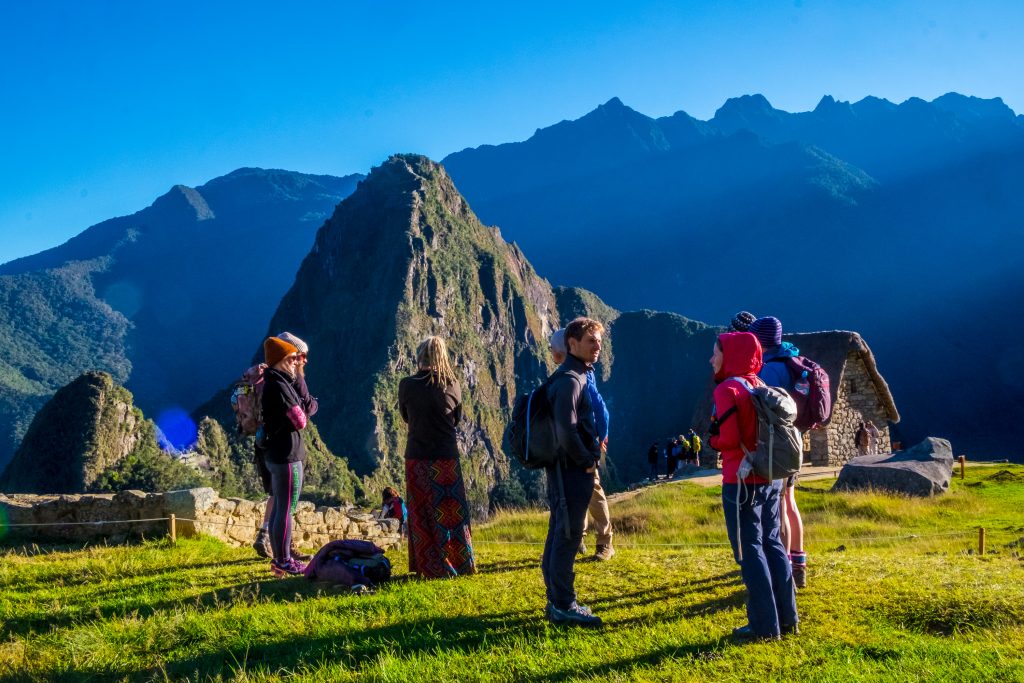
Travel to Machu Picchu: Listen to Your Heart
Entering the mysteries of Machu Picchu is much more than just a trip; it’s an encounter with history, nature, and the majesty that time has not been able to erase.
Choosing the ideal moment to visit Machu Picchu is as personal as the bond you will form with this timeless place. In every season and in every corner, a unique experience awaits to be discovered. Whatever your decision, Machu Picchu awaits with its beauty and legends, ready to astonish you and leave you speechless.
You might be Interested:
- The 7 Best Treks to Machu Picchu
- Tickets to Machu Picchu: Everything you need to know!
- Everything you need to know about the dry season in Cusco, Peru
- Rainy Season in Cusco: Everything You Need to Know
- Machu Picchu: The easy way
- Classic Inca Jungle Trail: An incredible adventure in the jungle towards Machu Picchu
- Ancascocha Trek: Adventure to Machu Picchu
- Salkantay Trek vs. Inca Jungle Trek | Jungles or snow-capped peaks towards Machu Picchu.
- Lares Trek or Salkantay Trek? | We’re cracking open the treasure chest to Machu Picchu.

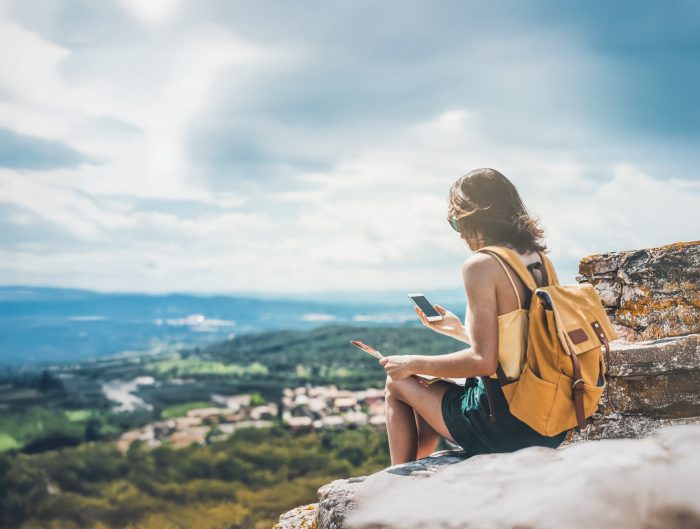
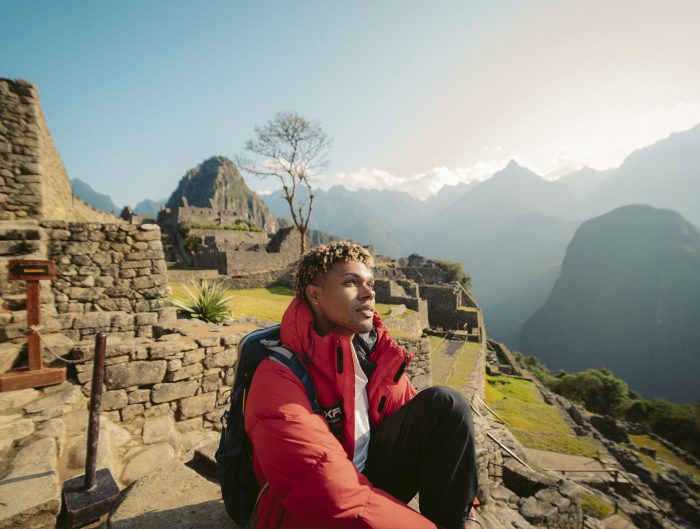

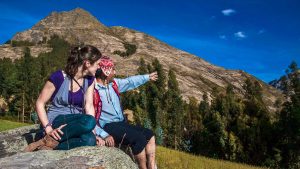
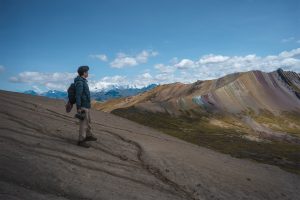
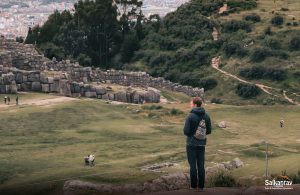
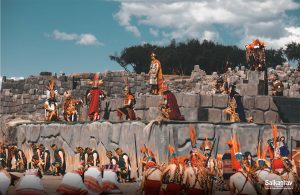
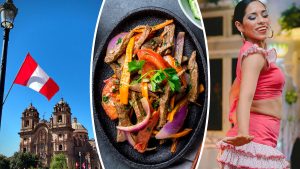

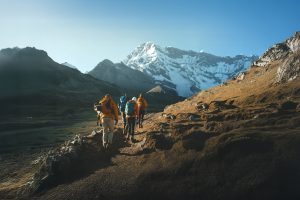



Leave A Reply